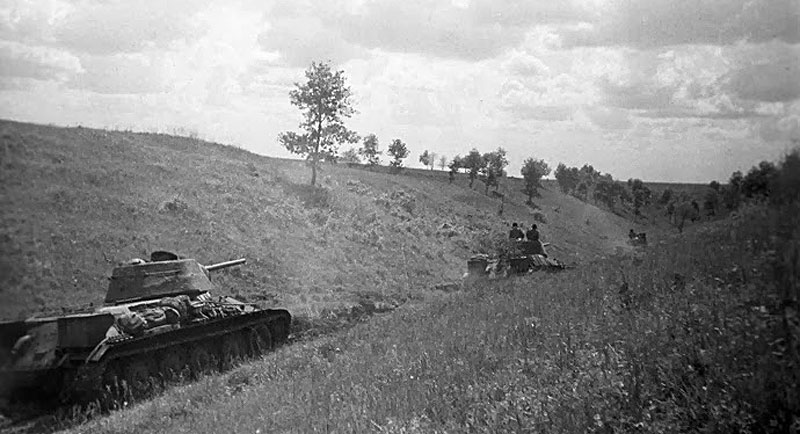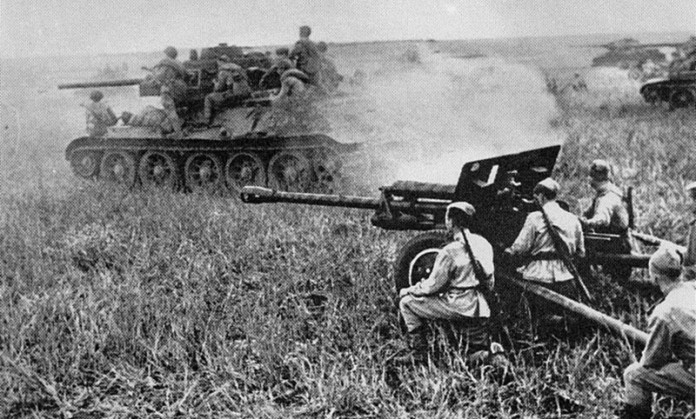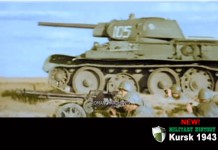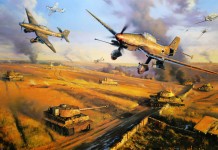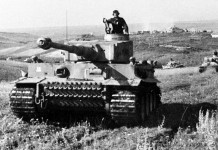

German forces occupied an extensive salient in the northern portions of the uplands around the city of Orel, while the Soviet Kursk Bulge dominated the upland’s southern region. The Red Army anchored its defenses along the northern edge of the Kursk Bulge, based on ridge lines north of the Svapa River valley and along the southern bank of the Oka River north of Kursk. Along the southern flank of the bulge, Soviet defenses extended along the higher ground north of the cities of Sumy and Belgorod, but here the terrain was barren and open country enabling wide deployment and maneuver of armored forces.
But the Stavka also held an “ace card” carefully concealed from German intelligence: The newly created huge Steppe Front in the rear zone of the Bulge contained not only further fortified belts, covering the east bank of the river Don, but concentrating an unprecedented mass of “fresh” fighting units, including six Armies with massive tank forces and airpower, all in top fighting condition, ready to strike a devastating counter attack on the mauled Nazi Panzers in the “Bulge”.
The nature of the bulge allowed the Red Army to build a virtual fortress of strong fortifications in greatest depth facing all the expected German axis of advance. The depth of these defenses was indeed staggering, combining no less than eight fortified lines of resistance, stretching nearly 110 miles deep. The immense use of manpower, both military and civilian, employed to build this huge task, left no doubt as to the significance of the coming battle for life and death, facing the Nazi onslaught as anticipated by the Russian commanders.
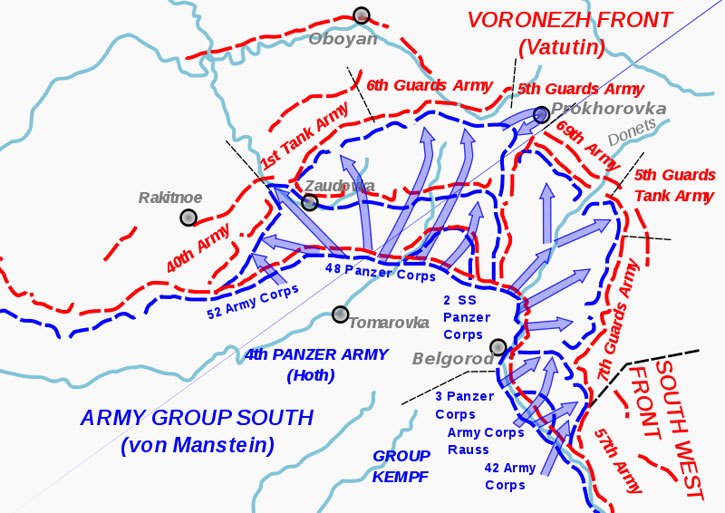
[nonmember]

[/nonmember][ismember]
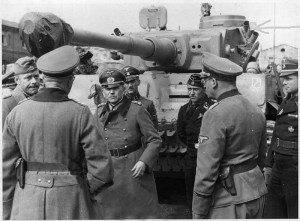
Historians and interested readers alike have been dazzled by staggering human and material losses, suffered in such a short time, becoming endless subject of myth and misconceptions on both sides. But the sheer drama of combat and its horrors remains one of the most discussed military campaigns in modern history.
The Germans faced a number of major problems in early 1943. First, among them was manpower. The armed forces had been severely mauled on the Eastern Front, after continuous operations from June 1942 to March 1943, most German units were worn out. General Heinz Guderian the leading Wehrmacht tank expert, did not believe that either Army Group, destined for the attack could be ready to mount the offensive that Adolf Hitler and his High Command envisioned and declared that the mission was pointless…” if we attacked according to the plan of the Chief of the General Staff, we were certain to suffer heavy tank casualties, which we would not be in position to replace in 1943″, Guderian warned and he certainly knew what he was talking about!
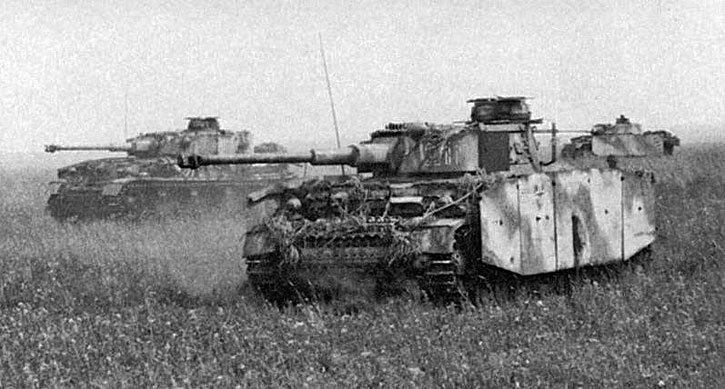
The Germans placed all their hopes on two new tanks, just coming off the production line: the Pz IV Tiger and Pz V Panther. The Tiger was indeed a massive beast to look at, but it was not a “wonder weapon” that Hitler believed. The first time Tiger saw action, was a year before, on August 29th of 1942, southeast of Leningrad with 1st company of sPzAbt 502. The highly embarrassing engagement ended in fiasco, with a new Tiger being captured by the Soviets, who then examined the vehicle in detail, to discover its weak points and there were several, which proved this Behemoth’s vulnerability during the Kursk carnage.
Correctly estimating the two German onslaught approaches, North and South of the Bulge, the Soviets created lines of defense in depth, with two Rifle Divisions defending the first belt, and one defending the second. Successive defense belts would slow German forces down and force them to conduct slow and attritional battles to break through into the open operational depths. Each defensive belt included not only trenches and fortified blockhouses with anti-tank weapons. But also so-called well camouflaged Pakfronts, with artillery and antitank guns hidden at vantage points. The Russians used their very effective 85mm anti tank gun and also included German anti-tank guns captured at Stalingrad into some of the Pak Fronts.
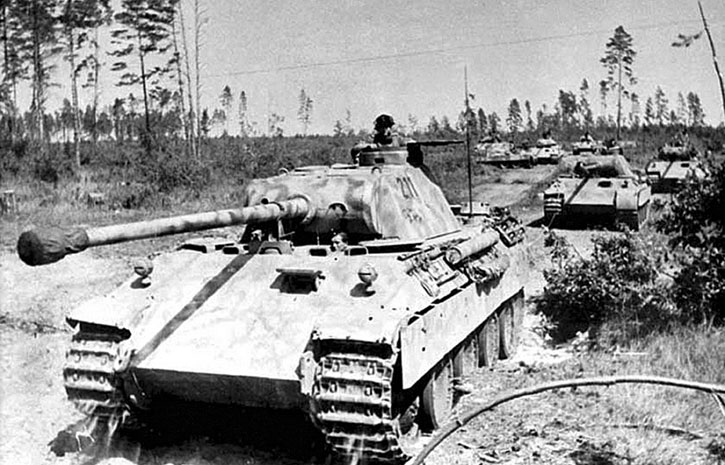
The entire zone was covered with dense multi-layered minefields with no less than 64,000 AP and 70,000 AT mines sown between the defensive belts. Along the most expected enemy approach routes, strong components of T-34 tanks and SP tank destroyers, mounting 122mm and 152mm guns, were concealed in readiness positions to mount local counter attacks on the German Panzers and grenadiers already deeply entangled fighting in the dense defenses and minefields.
Taking no chances, that the German elite Panzer units would smash through, Russian elite Rifle Divisions defended the first and second belts. Moreover, to keep the German vanguard Panzers at bay, as long as possible, wearing them down by destroying as many possible of the lead panzers, a first belt division would only tasked to defend an area only 8-15 km wide and 5-6 km in depth, thus bearing maximum firepower concentrated on the attackers. Successive defense belts would then slow German forces down and force them to conduct costly attritional battles to break through into the operational depths, where they could deploy and manoeuvre. Slowing the operational tempo of the enemy would also allow the Soviet intelligence analysts, operating right up front, keeping track of German pincers and their direction of advance, enabling Soviet stand-by tank formations to be accurately positioned to counter-attack, preventing the German spearheads breaking through each of the three main defense belts and reach their pre-planned operational zones.[/ismember]
Having described the general situation, without going into unnecessary detail, (which can be easily studied further by consulting the variety of maps) let us therefore enter into the battle scene, without further ado and try enliven what happened, as seen through the eyes of combatants and their experience, fighting under the most trying conditions, that the horrors of war can challenge young humans to the utmost courage.
Previous chapter:
Part I: When Humans fought Steel while Steel clashed Steel
[nonmember]

[/nonmember]
Next chapters:
- Part III: The German Plan: Simple but Unrealistic to Succeed
- Part IV: The northern salient – Walter Model’s Army Sector
- Part V: Back to the Southeastern Sector
- Part VI: Carnage at Prokhorovka
